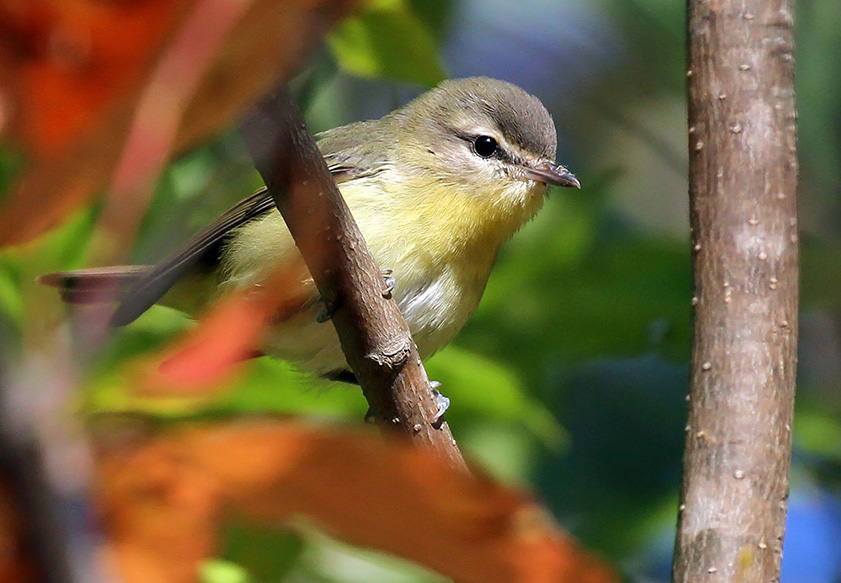BIRDING AND BIRD CONSERVATION
Wisconsin is home to over 300 species of birds and thousands of people who enjoy birds. Explore the links below for information on birds, bird identification, birding locations and how to get involved in conservation efforts.
STATEWIDE BIRDING REPORT AS OF SEPT. 20, 2021
A sign of the changing season, a Philadelphia vireo forages among the fall colors in Bayfield County recently / Photo Credit: Wisconsin DNRPeak migration of our long-distance, neotropical migrants has passed, though some will be seen through the end of September, especially in the south. These include warm-weather species like hummingbirds, various warblers, indigo buntings, rose-breasted grosbeaks, swallows, catbirds and more. The prevalence of yellow-rumped and palm warblers across the north indicates the transition underway to later, short-distance migrants, as does the arrival of dark-eyed junco, white-crowned and Harris’s sparrows, rusty blackbird and both kinglets. Other notable landbirds seen this past week were Swainson’s and gray-cheeked thrushes, Philadelphia and blue-headed vireos, northern flickers, red-headed woodpeckers and eastern wood-pewees.
Chimney swifts are staging in large numbers in far southern counties, including evening roost counts of 1,000+ from Dane and Waukesha. Also impressive from Dane this week were counts of 1,000+ tree swallows and 12,000+ common grackles. Broad-winged hawks moved through in large numbers, highlighted by a count of 400+ in just one hour in Sauk. Some large kettles are possible in the south over the week ahead, as are good numbers of sharp-shinned and Cooper’s hawks, merlins and a few peregrine falcons.
Flocks of Canada geese moved in from the north over the past couple weeks. Duck migration is just beginning to pick up as pintail, wigeon, shovelers, green-winged teal and a few divers begin to show. Other wetland birds now being seen are herons, egrets, sora, Virginia rail, Wilson’s snipe and pied-billed grebes. Shorebird migration is generally waning but now is a good time for American golden-plovers, sanderlings, yellowlegs and an occasional red-necked phalarope.
Some recent rare finds include Sabine’s gulls in Douglas and Dane, parasitic jaegers in Douglas, white-winged dove in Milwaukee, red knots in Door, snowy egret in Dane, yellow-crowned night-herons in Milwaukee and Sheboygan, Nelson’s sparrows in Dane, Dodge and Outagamie, and Franklin’s gulls in above-average numbers across multiple counties. The week ahead is forecast to feature cool, dry weather dominated by west and northwest winds, meaning it should be great for bird migration and bird watching! Get out to enjoy the show, and help us track the migration by reporting your observations to www.ebird.org/wi.
– Ryan Brady, DNR Natural Heritage Conservation Program Biologist







